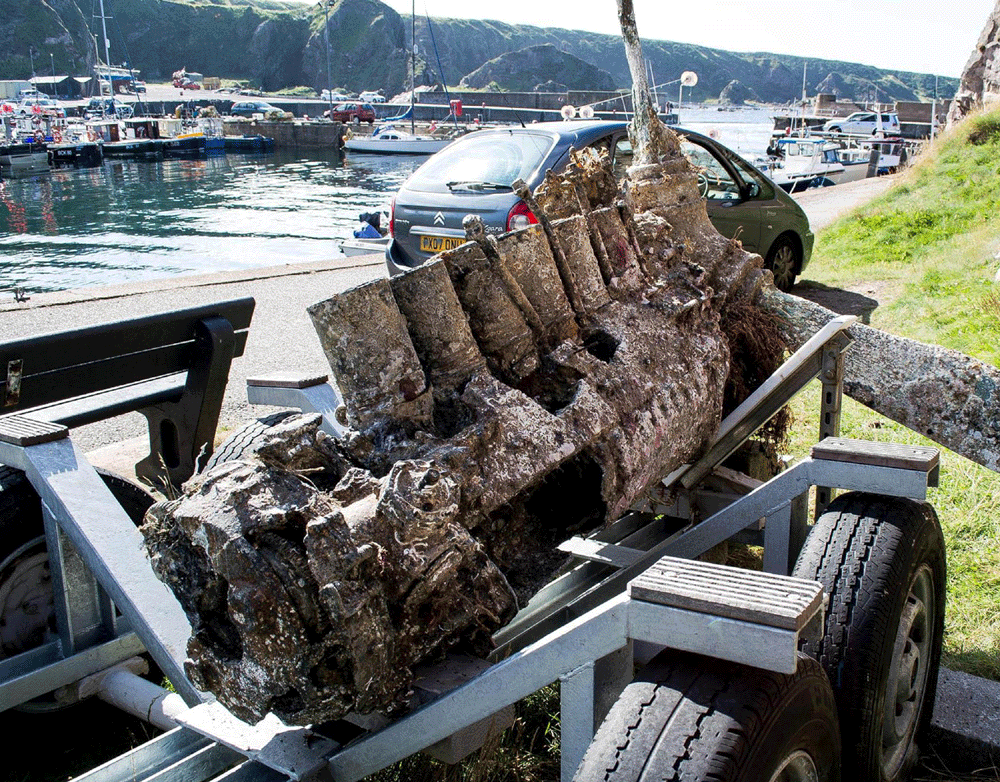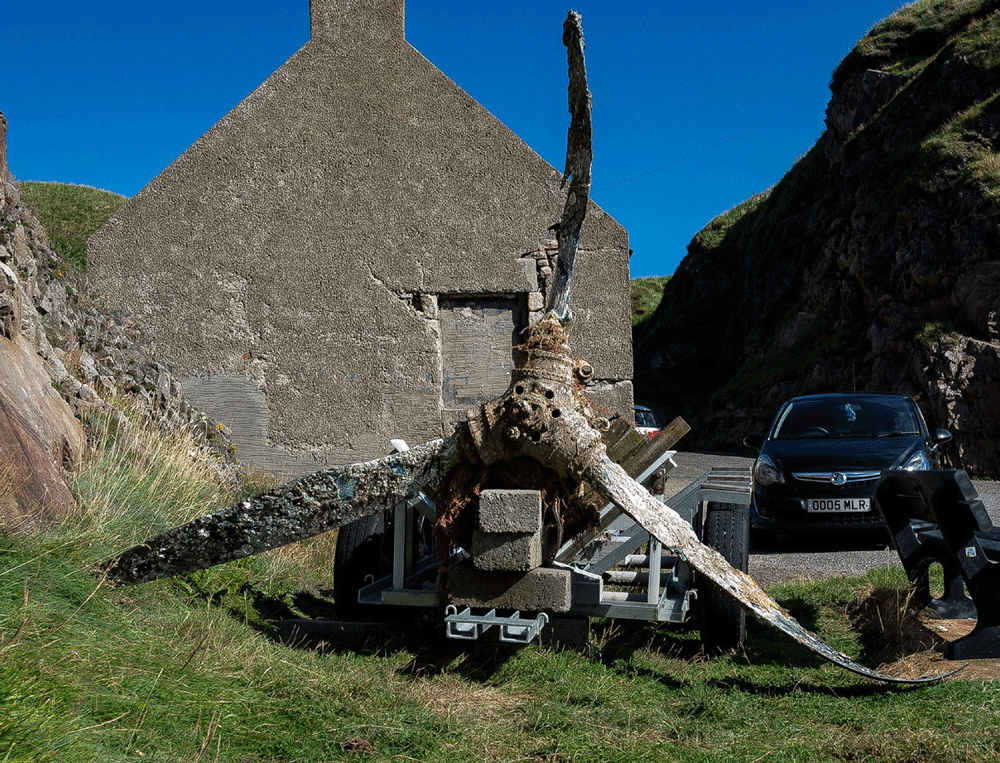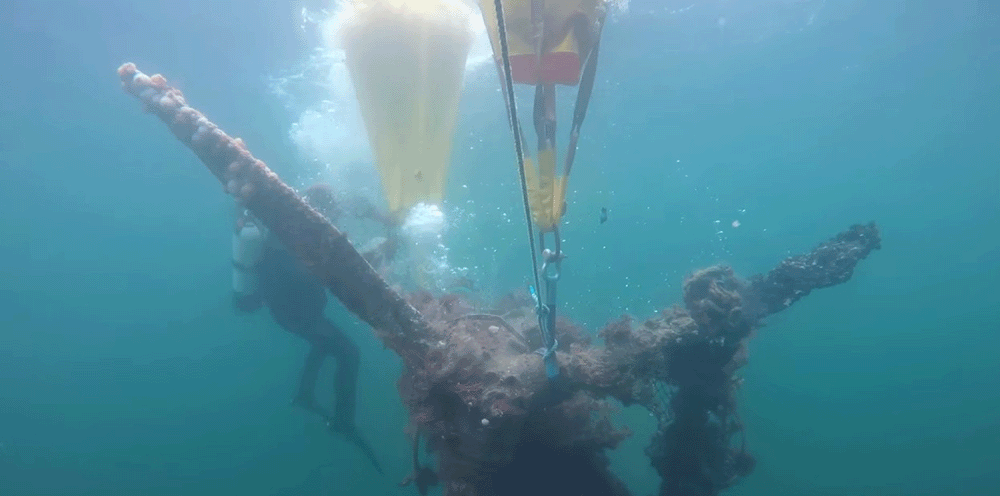AN eagle-eyed Scottish fisherman has found the engine of a German bomber that lay unsuspected at the bottom of a harbour for 75 years.
The engine, with propeller still attached, is believed to belong to one of the Junkers Ju 88 which raided the north-east of Scotland in 1941.
One of the bombers was shot down and it is now seems certain the engine crashed near the harbour at Portknockie, Moray, where three civilians died in a raid.
Remarkably, fisherman and diving enthusiast Brian Donaldson spotted the engine whilst completing a dive to the ocean bed at Cullen Bay near Portknockie. He then towed it to shore.
Footage of Brian’s exploits was captured by his friend, Malcolm Slater, on a GoPro camera.
In the footage, Donaldson can be seen raising the engine to the surface of the sea using air bags.



After lifting the engine, he then attaches it to his fishing boat and tows it into Portknockie harbour.
He then attaches it to a trailer to bring it ashore, where it was photographed.
Porknockie local Craig Johnson posted images of the engine on Facebook on Monday, with the caption: “Not something you see every day, a WW2 plane engine, pulled up from the bottom of Portknockie harbour last week.”
Aviation experts who examined the photographs believe the engine is a Junkers Jumo, used to power Luftwaffe aircraft.
Stuart Powney, a former aviation engineer and council member at the Historic Aircraft Association, said: “I am inclined to agree with the suggestion that it is a Junkers Jumo engine, possibly a 213.
“As for aircraft type, the propeller blades suggest that it could be a JU 88.
“The photographs show quite clearly that there is slight bending of all three blades. This indicates that the engine was still turning when it hit the water, but not under any significant power.”
Portknockie may seem an unlikely target for the Luftwaffe but records indicate that Norway-based bombers were trying to destroy trains and rail infrastructure in the area.
A local newspaper report from the time stated: “Portknockie in 1941 had a machine gun post and two German bombers, from the Luftwaffe, were gunned down, one crash landed in a nearby field, with the other crashing into the sea, near the shore.”
In a separate raid, three residents were killed by Luftwaffe bombs and machine gun fire, – James Mair, 51, his 16-year-old daughter Margaret Ann Mair and Annie Mair McKay, 47
George Wood, 87, who grew up in Portknockie, said: “I myself was a pupil at Portknockie elementary school at the time. We all ran to the bomb shelter, which was nothing but a small, roofless structure of cement blocks inside another building.
“I remember that from a peep-hole in this structure, I was able to look out and observe the aircraft before it passed over the school at little more than roof-top height.
“By that time, I considered myself pretty good at aircraft recognition, both of friendly and hostile aircraft, and recognized the aircraft for what it was, a JU 88.
“I very much doubt if the engine came from that particular JU 88, because to the best of my knowledge, it got away scot-free to its base in Norway, where these hit and run attacks originated.”
Speaking in 2012, at the unveiling of a memorial plaque to commemorate the victims of the Portknockie attacks, president of the Cullen, Deskford and Portknockie Heritage Group, Cy Pirie, explained the extent of the bombings.
He said: “The raid on Portknockie [20 February 1941] was not unique and was part of the tactical and terror campaign prosecuted on the north-east of Scotland, “Hellfire Corner”, from Norwegian bases by the Luftwaffe from 1940 to 1942.
“It is believed that the target in the Portknockie raid was the train in the siding of Portknockie Station. Two bombs were dropped; one failed to explode and was detonated later by Bomb Disposal Squad.
“The other, which caused the deaths, injuries and damage to property, missed the train and flew through a gap in the streets before exploding in the backyards between 8 Seafield and 9 Admiralty Street.”

